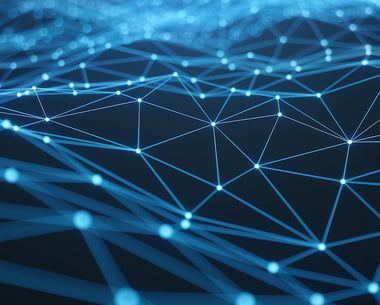
Deep work in IT
20 December 2022
How to be productive at work?
As desirable as it is, work productivity is not always easy to achieve or measure. We are surrounded with several devices that steal our attention, both in professional and personal life (pings for new messages, emails, cell phone rings, communication channels, smart home appliances calling for action, social media, or other Internet content). All of them affect both the time and quality of our work. How not to get sucked into this vicious circle and to improve the quality of our work, getting more professional satisfaction and developing skills in nearly any chosen area? There are a few things that can be done, and one of them is development of the skill of “deep work”.
In the pages of his book Deep Work Cal Newport defines deep work as: “Professional activities performed in a state of distraction-free concentration that push your cognitive capabilities to their limit. These efforts create new value, improve your skill, and are hard to replicate.”
In the world of wide-spread multi-tasking, the scarcity of work in a state of distraction-free concentration is elevating its value, since it substantially affects work outcome and satisfaction as well as the overall wellbeing. From the neurobiological point of view, ticking off tasks on your to-do list is very rewarding for the brain as it initiates dopamine production (chemical compound known as the ‘feel good’ hormone). And although dopamine is generated also in case of using social media or surfing the Internet, such activities usually neither contribute to professional or personal development or promote any professional or personal achievements. Another thing that the brain loves is challenging tasks that can teach us something or solve a problem that preoccupies our mind, or winning appreciation for our work.
Deep work is vastly different from shallow work defined as non-cognitively demanding, repetitive tasks, often performed while distracted. These efforts tend to not create much value and may be easily delegated to less experienced staff members. Shallow work often includes replies to emails or participation in meetings held to solve specific problems. So instead of getting trapped into thinking that those tasks are bad, it would be worthwhile pre-arranging them.
Surely all IT workers once in a while takes part in meetings that could be easily replaced by an email, or gets emails with questions answers to which could easily be found in documentation or with a help of the Internet browser. Depending on deadlines, such distractions may be demotivating, result in procrastination, and have a negative impact on wellbeing both in professional and private life.
So what can be done to improve work and increase work productivity:
1. Developing the ability of deep work as a skill. As any other skill, deep work can be learnt, first of all by defining goals for specific tasks, prearranging the place where we will be working (e.g. at the office in a silent zone, at home in a closed room), how long we will be working on it (e.g. for one, 1.5 or 2 hours), how we can lessen the friction (e.g. putting communicators on Do Not Disturb mode, informing the family or workmates about deep work time, preparing something to drink in advance, etc.)
2. Task scheduling in time blocks. It is important to schedule tasks for a given work day, preferably prioritizing them (1-3 tasks) and everyday tasks that are to be done for a given position, according to their type in time blocks, depending on the context. Scientific research proves that switching between tasks from different contexts leads to more mistakes and subprime work quality. Most of us do not reply to emails promptly, therefore, except in case of emergencies, it makes no sense to check emails every 10 minutes. It works better if you do it in a half-hour or one hour blocks, 2-4 times a day. Once you check your emails, it’s better to reply to them promptly, if it’s possible, because when you put it off, you end up spending two times longer doing it later. Correspondence that requires more commitment, fact checking or consulting should be handled within a given task block. Similarly, phone calls should be made in time blocks a few times a day. Meetings with the team, clients or with the boss may also be scheduled in blocks, e.g. if you know that such a meeting should not require too much creative effort, it’s better to plan it for the second half of the day, which leaves more time in the first part for tasks that require focus and commitment. Whereas demanding meetings should be planned before we handle challenging issues.
3. Curbing distractors – switching off pop-ups and other notifications that do not communicate emergencies, both at work and in a private cell phone.
4. Embracing boredom between tasks. If we face a real challenge that we cannot find a solution to, it’s good to take a break from trying to solve the problem and let our subconsciousness work on it. It is a well-known phenomenon of good concepts coming unbidden while taking a shower, during a walk or other non-cognitively absorbing activity. Sometimes fighting boredom and trying to be engaged all the time (in social media, reading news, entertainment, communicators) drains our cognitive capacity making it difficult to focus when necessary. So instead, while waiting in a queue, waiting for a program to download, just give yourself time to simply be.
5. Productive meditation – while being engaged in a physical activity that is not cognitively demanding (e.g. while jogging, walking, taking a shower, painting) just focus on one specific issue. This method of problem-solving proves very productive in professions that are very cognitively demanding, breaking challenging tasks down into smaller parts makes it easier to find a solution.
6. Applying the 80/20 Pareto principle – 20% of your activities account for 80% of your outcomes, so it’s worth having a good look and see which efforts are most productive. The principle applies to nearly all areas, e.g. 80% of income comes from 20% of clients, 20% of the code generates 80% errors, etc.
7. Schedule your leisure and enjoy it to the fullest. When you work, work hard, when you are done, be done.
In every case there are extraordinary situations, and it’s OK. Starting to plan deep work more consciously, remember you can’t do it all the time. As the author of Deep Work observes, those with no earlier experience with deep work, initially will probably have hard time trying to focus on deep work just for one hour a day. But when practicing this skill it may stretch up to 4 hours a day.
Following time blocks may also be challenging because of emergencies popping up unplanned, and we need to keep it in mind. It’s better to take breaks in deep work than in shallow work. Professional satisfaction comes with doing meaningful work that you are an expert in and that is appreciated by your superiors or other persons that you respect. So try new approaches to find your own working style that is engaging and rewarding.
A good workplace is a place that makes you work well
Whether you are an IT specialist, leader or HR specialist, it’s good to keep this in mind while creating work culture and structure in a company to facilitate productive work.
How to improve a team or company productivity:
- Schedule meetings in advance.
- Untangle communication and channels for communication of urgent, vital and everyday matters.
- Allow staff members to block their diaries, except meeting times.
- Create silent zones.
- In email correspondence outline a problem to be solved and specify a deadline when a solution is expected.
- Hold quarterly or annual evaluation interviews to update duties adapting them to current needs.




